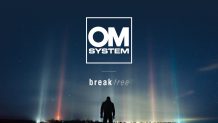“The completion of this project is a major accomplishment and a step in the right direction for the environment,” said Shin Kataoka, President of Fujifilm Manufacturing U.S.A., Inc. “The landfill gas to energy project goes a long way toward meeting our global target for reducing the amount of greenhouse gasses being released into the atmosphere,” Kataoka continued.
Globally, Fujifilm has committed to reduce carbon dioxide emissions 40 percent from its 1990 numbers by 2012, and is engaged in the active pursuit of new energy fuels that will prevent global warming. The company recently announced plans to develop a wind farm in Tilburg, The Netherlands, to supply a portion of the electricity needs of Fujifilm Manufacturing Europe B.V., which manufactures color photo paper and offset printing plates.
By using the methane as energy in Greenwood, Fujifilm is preventing methane emissions from being released into the atmosphere from the landfill. According to the U.S. Environmental Protection Agency, methane is a very potent greenhouse gas that is 21 times stronger in trapping heat in the atmosphere than carbon dioxide, thereby contributing to local smog and global climate change. This system will also reduce Fujifilm’s natural gas usage and relieve some of the demand for this limited natural resource.
Fujifilm uses the gas in two of its specially equipped boilers with a dual burner system that can be switched back and forth between landfill source methane and natural gas purchased from the Commission of Public Works. Fujifilm plans to use at least 197 billion BTUs of energy from the landfill per year. According to the EPA (using national averages), this amount of energy would provide annual heating for more than 5,000 homes. The amount of CO2 emissions destroyed and avoided would be equal to the emissions from more than 17,000 vehicles each year.
Fujifilm has also implemented a range of measures around the world, all with the objective of contributing to sustainable development by designing products that take the environment into account, reducing packaging materials and reducing greenhouse gas emissions – and helping our customers do the same. In the graphic communications industry, Fujifilm’s patented Taskero Universe ColorPath Verified provides printers with the mechanism not only to monitor and manage their color production process, but also to make it more efficient and more eco-friendly. The development of processless (Ecomaxx-T) and low-chemistry (Ecomaxx-V) plates offer environmental solutions in the pressroom, while the FLH-Z processor drastically cuts down on the amount of chemistry and effluent in the prepress area.
Additionally, Fujifilm is the leading manufacturer of UV-cured, VOC-free and solvent-free ink jet inks. The company’s high-performance films used in flat panel displays are manufactured with plant-derived cellulose, rather than petroleum-based material and carry the Biomass Mark of the Japanese Ministry of Agriculture, Forestry and Fisheries. Fujifilm supports numerous eco-sustainability measures, including habitat and species preservation for the Giant Panda through its longstanding collaboration with the Smithsonian’s National Zoo, and support of public open space initiatives such as New York City’s Friends of the Highline.





